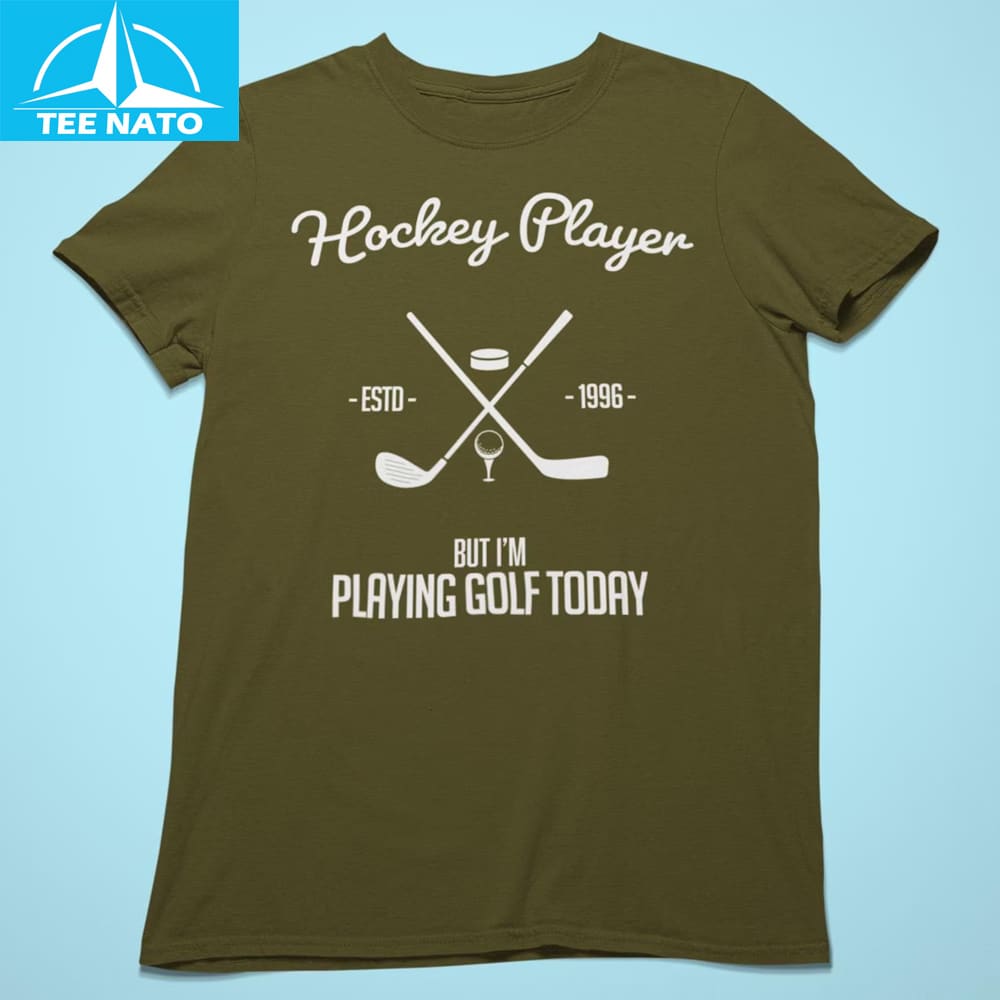From Slapshots to Sand Traps: A Hockey Player’s Golfing Journey
From Slapshots to Sand Traps: A Hockey Player’s Golfing Journey
Ever wonder what happens when a seasoned hockey player but I’m playing golf today? The transition from ice skates to golf spikes is more than just swapping equipment—it’s a fascinating blend of agility, precision, and mental adaptability. Whether you’re a professional athlete or a weekend warrior, diving into new sports can unlock hidden skills. Here’s how a hockey player can not only survive but thrive on the golf course, and why this crossover might be your next favorite challenge.
The Mental Game: Trading Rink Aggression for Fairway Focus
Switching from a high-speed rink to a serene fairway requires more than just a change of gear—it demands a complete mental shift. Hockey players are conditioned for rapid reflexes and aggressive maneuvers, while golf rewards calm concentration and strategic thinking.
Embracing the Slower Pace
Hockey is controlled chaos: physical checks, powerful slap shots, and constant motion. Golf, on the other hand, is a quiet battle against yourself and the course.
For a hockey player but I’m playing golf today, the first challenge is to slow down. Hockey instincts urge you to “move faster, hit harder!” while golf advises you to “breathe, aim, and swing smoothly.”
The key? Treat each swing like a penalty shot—where controlled execution is more effective than raw power.
Channeling Competitive Energy
Hockey thrives on team rivalry; golf is an individual pursuit. However, both sports require a dedication to continuous improvement.
Instead of engaging in verbal jabs with opponents, channel that competitive drive into lowering your handicap. Apply the teamwork mentality of hockey to build rapport with your golf partners—because even individual sports are enhanced by good company.
Visualizing the Perfect Shot
Hockey players often visualize scoring a goal before the play unfolds. Use this same mental practice for your golf swings.
Imagine the flight path of the ball, the arc of your club, and the satisfying sound it makes landing on the green. This mental preparation helps bridge the divide between the two sports.
Transferable Skills: How Hockey Abilities Enhance Your Golf Performance
It may be surprising, but hockey develops skills that are highly beneficial for golf. Here’s how the hockey player but I’m playing golf today has a distinct advantage.
Superior Hand-Eye Coordination
Hitting a fast-moving puck requires exceptional hand-eye coordination.
This same level of precision is an asset in golf. Hockey players are accustomed to adjusting their body position on the fly, a skill that can help prevent slices when driving.
Powerful Core and Balance
The classic hockey stance—with bent knees and a centered weight—is very similar to the foundation of a good golf swing.
The rotational force generated in a slapshot is remarkably like the torque in a golf drive. Use this ingrained muscle memory to master long-distance shots.
Adapting Grip from Stick to Club
Holding a hockey stick is intuitive for players, so gripping a golf club should feel familiar.
Both require a grip that is firm yet supple. The dominance of the top hand in hockey corresponds to the lead hand’s control in golf. By adjusting your grip pressure, your seven-iron can feel as natural as your hockey stick.
Potential Challenges: Common Mistakes for Hockey Players in Golf
Despite their transferable skills, certain challenges await the hockey player but I’m playing golf today. Being aware of these can turn them into valuable learning opportunities.
Using Too Much Power in the Swing
Hockey players are used to explosive power, but golf penalizes an overly aggressive swing.
The wind-up for a slapshot is not the same as a driver’s backswing. Concentrate on a smooth, rhythmic tempo rather than sheer force. Remember that good form leads to greater distance.
Overlooking the Short Game
In hockey, spectacular goals get all the attention. In golf, it’s often the simple putt that wins the match.
Dedicate about 70% of your practice to chipping and putting. The finesse required for a deke can be applied to delicate shots around the green.
Forgetting Course Strategy
Hockey is a reactive sport, while golf is all about planning ahead.
Analyze the course as you would a power-play formation. Identify the “defenders” (like bunkers and water hazards) and play strategically, not just forcefully.
Equipment Transition: From Hockey Gear to Golf Essentials
Switching your gear is part of the fun. Here’s what a hockey player but I’m playing golf today should consider.
Selecting the Right Clubs
- Driver: Similar to a slapshot specialist, choose a driver that offers forgiveness and power.
- Irons: These are your reliable mid-range tools, like a dependable wrist-shot.
- Putter: This is your “empty-net goal scorer”—where precision is absolutely essential.
The Importance of Footwear
Spikes replace blades, but stability is still key. Choose spiked golf shoes with good ankle support—you’re not on the ice anymore.
Clothing Adjustments
Trade in bulky pads for breathable, moisture-wicking polo shirts. You’ll still have mobility, but sun protection becomes a priority.
Training Regimen: Hockey-Inspired Golf Drills
Incorporate hockey drills into your golf practice for a unique advantage.
Putting with a Reaction Ball
Bounce a reaction ball (often used in hockey training) and putt it as it comes to a stop. This hones your adaptability, as greens are rarely perfectly smooth.
Power-Play Training Circuit
Alternate between hitting slapshots and drives at the driving range. This contrast helps you feel the differences in your swing while building stamina.
Agility Ladder Drills for Footwork
Quick footwork is crucial for both hockey strides and golf weight shifts. Use an agility ladder to improve your stance transitions.
Conclusion
A hockey player but I’m playing golf today is not just exploring a new sport—they are creating a fusion of discipline, power, and finesse. The lessons learned on the ice—such as teamwork, perseverance, and precision—are equally valuable on the fairway. So pick up your clubs, embrace the patience that golf requires, and let your hockey background inspire a new passion. Your next hole-in-one could feel just as thrilling as a hat trick.
POSTER SEO_SIBATOOL




